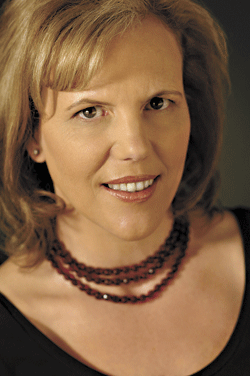Theo Pauline Nestor had a problem—or rather, two of them. First, in 2003, her 11-year marriage “ended pretty much overnight.” Second, her manuscript memoir about motherhood “was being refused by every publisher in New York,” she recalls, which made it impossible for her to land a job teaching a memoir class at the UW’s extension program. “They won’t hire you unless you have a book or a book contract in the genre that you’re teaching in.” An essay about the divorce, “The Chicken’s in the Oven, My Husband’s Out the Door,” was subsequently published in The New York Times‘ “Modern Love” column, but she still wasn’t a published book author. Yet she continued to write.
“All I could write about was the divorce,” she says of that unhappy period. “I wasn’t aware that you could sell a memoir as a proposal.” Fortunately, she had a sympathetic agent who urged her to turn what she had written into a proposal, complete with outline and marketing analysis. Long story short: It sold, and her book, How to Sleep Alone in a King-Size Bed, will be published by Crown next January. And her “Chicken” essay has since made the cut into the anthology Modern Love: 50 True and Extraordinary Tales of Desire, Deceit, and Devotion (Three Rivers, $14.95), published earlier this year. (There, too, is “Prince Charming for the Prom [Not Ever After, Though]” by Seattle Weekly contributor Frank Paiva.) And she got the gig at UW Extension, where I recently observed a class to see how Nestor advises future memoirists.
In action, Nestor is an imminently likable instructor, funny and self-deprecating, prone to wearing peach scarves and black clothes. The tall, lithe blonde—who exudes studiousness in her black-rimmed glasses—earned her M.F.A. in fiction from the U-Dub in 1999. Around the U-shaped group of tables, her students—largely white, all but three female—speak of her in unfailingly kind terms. For Constance Welch, Nestor’s lesson is “how to plot your life story. The narrator or story needs to have some sort of struggle. She [Nestor] is phenomenal in inspiring confidence.”
Still, there’s the same conundrum for teacher and pupils alike: How do you outline a memoir for a life you have yet to live? Just as Nestor was trying to sell a proposal for a life in medias res, most of her students also have to learn where to set the narrative benchmarks—the beginning, middle, and end of their path. Says Nestor, “High praise for the memoir is, ‘It reads like a novel.’ People, when they read that memoir, want that immersion from the novel. They want the narrative drive that pushes it forward.”
But forward toward what? The problem, her student Welch realizes: “To have a conclusion and an ending that was satisfying…meant that I had to do certain things that I haven’t yet done.” Nestor points to another one of her students, Abby Carter, a 9/11 widow whose The Alchemy of Loss will be published next spring: “She’s writing the story of widowhood and coming to terms with her grief. But it’s only five and a half years later, and it’s a huge life experience. It’s hard to say, ‘X is the date that I was all better.’ She’s writing about a process that’s ongoing.”
And yet publishers demand the memoirist find that X point, placing a somewhat arbitrary set of brackets and plot points around one’s pain and healing, suffering and recovery. Triumphant endings sell books and book proposals, even if they aren’t so easy to come by in real life.
Thus, Nestor remembers, though she originally meant to end How to Sleep Alone doing precisely that, “I actually ended it when my daughters and I were in my best friend’s wedding. My kids were flower girls, and I was a bridesmaid. I don’t even think [my friends] were engaged when I wrote the proposal.”
But, she says, plotting the book before she’d lived it didn’t make her live her life any differently.








